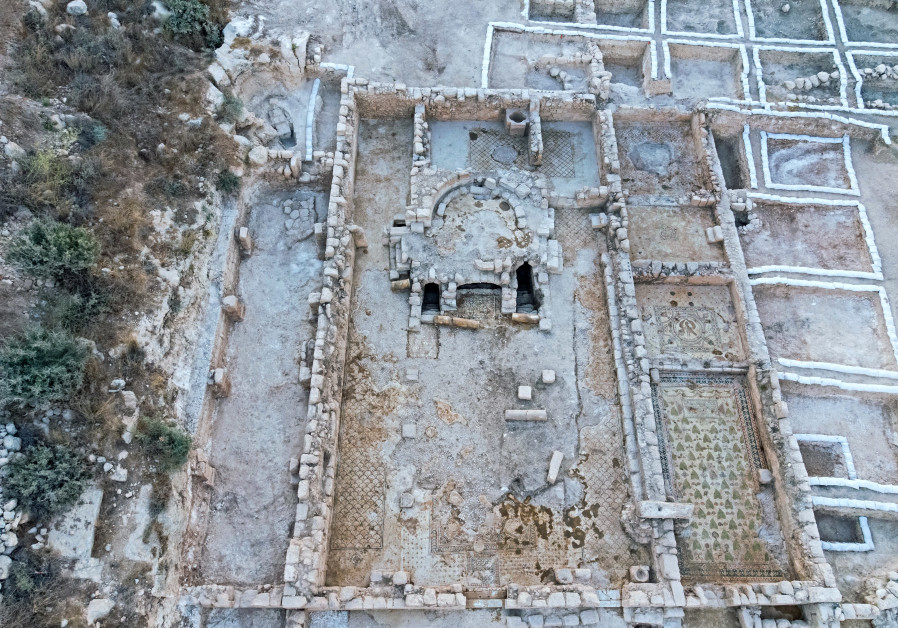1,500-year-old Byzantine Church with stunning mosaics discovered in Bet Shemesh

The church in Ramat Beit Shemesh.. (photo credit: ASAF PERETZ/ISRAEL ANTIQUITIES AUTHORITY)
About 1,500 years ago, Christian worshipers flocked to a majestic church in the area where the Israeli city of Beit Shemesh stands today. Visitors entered the sacred space of the church of the “Glorious Martyr” through a vast courtyard and a broad corridor. They walked on the floors decorated with stunning, colorful mosaics, and probably lit a clay oil lamp when they turned away from the dazzling Middle Eastern sun to descend into the dim crypt of the church, where the relics of the “glorious martyr” were preserved.
Hundreds of those lamps are among the artifacts uncovered in a three-year-long excavation at the church’s site by the Antiquities Authorities (IAA).
Its findings are featured in an exhibition inaugurated on Wednesday at the Bible Lands Museum in Jerusalem.
The building has been named the “Church of the Glorious Martyr,” after the figure to whom the church was devoted according to an inscription, and whose identity remains a mystery.
Researchers, though, did uncover a Greek inscription that pays tribute to Eastern Roman Emperor Tiberius II Constantine for funding the expansion of the church.
Tiberius ruled the Byzantine Empire between 578 and 582 CE, about two centuries after the split between Byzantium and Rome, and a century after the Western Roman Empire had collapsed forever.
According to the IAA, the main building dates back to a few decades earlier, to the rule of Emperor Justinian.
The structure of the Church presents a main, central hall flanked by two aisles. Several areas of the church still show spectacular mosaic floors, featuring imaginative, nature-inspired decorations such as leaves, flowers and vivacious birds, including a winged eagle, a symbol of the Byzantine empire.
According to the director of the excavation Benyamin Storchan, the inscription referring to Tiberius holds specific historical relevance.
“Numerous written sources indicate that the empire funded churches in the Land of Israel, but in the archaeological study, very few inscriptions such as the one found in Beit Shemesh are known,” he said in a statement by the IAA.
Storchan added that, as far as the church’s structure was concerned, two separate sets of stairs lead to the crypt, allowing large groups of pilgrims to visit it at the same time.
The excavations also exposed a baptismal basin in the shape of a cross.
The remains of the church were uncovered during construction works by the Construction and Housing Ministry to expand Ramat Bet Shemesh, a large suburb of the city of Bet Shemesh, located approximately 30 kilometers west of Jerusalem.
The ministry invested about NIS 70 million in the preservation of the archeological park, of which about NIS 7 million went into the excavation itself.
Thousands of Israeli youth participated in the excavations, as part of IAA educational projects to strengthen the connection between Israeli students and the history of the Land of Israel.
“The vision of the Bible Lands Museum is to provide a cultural, educational and experiential facility that connects the visitors who cross its gates to the roots of the past,” commented Director Amanda Weiss.
“We are delighted by our partnering with the IAA, which allows us to present the impressive findings unearthed at the Church of the ‘Glorious Martyr’ with the help of thousands of volunteers and youth,” she added.
`; document.getElementById(“linkPremium”).innerHTML = cont; (function (v, i){ });





Comments are closed.